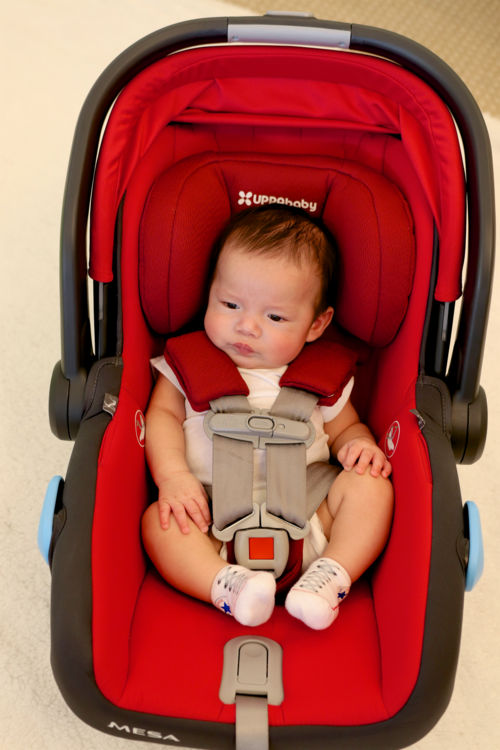After the discovery in the early 90s that sleeping babies on their backs can prevent SIDS, we’ve seen a rise in torticollis and plagiocephalyin infants. But just because your baby sleeps that way doesn’t mean that he or she is destined for a flat head or a stiff neck. Taking a hands-on approach to parenting by holding your baby, wearing a baby sling or carrier and allowing for plenty of tummy time is the best way to keep your baby’s head from becoming misshapen. However, in our busy modern world, there are times we need a little help holding our babies. So what are your options?
Strollers are a great option for an on-the-go mommy and baby, as long as you follow some simple rules for positioning. First, your baby should spend no more than a combined three hours in strollers, swings, bouncy seats and car seats each day. Infant torticollis (twisted neck) and plagiocephaly, (flat head syndrome), is usually the direct result of too much time sitting or lying in one position. Encourage your baby to turn his or her head different ways when in a seat or stroller, perhaps by hanging interesting toys to one side, and then to the other.
Choose a stroller that changes to different positions, so that your baby doesn’t have to sit upright before he or she is ready. If you can, try to only use your car seat in the car and avoid attaching it onto the stroller. The time in a car seat can add up quickly, especially if you are out running errands all day!
Cribs are the best place for babies to sleep, so you should try to get them there as soon as possible. If you want the baby close to you, consider using a pack and play or a flat bassinet. Avoid any container that is inclined. Remember – this is where they will spend most of their day! Keep in mind that to counteract the time your baby spends sleeping on his or her back, schedule plenty of tummy time – at least 30-60 minutes each day. This should be broken up into small segments throughout the day to build your baby’s tolerance. Additionally, alternate your baby’s position in the crib, putting the head sometimes at one end and sometimes at the other. You can also move the furniture in your baby’s room, to encourage turning the head in different directions. It’s important to get your baby to alternate head positions and to look in different directions to prevent torticollis, a condition in which the neck muscles become too tight to turn the head in one direction and plagiocephaly, in which the skull becomes misshapen.
When it comes to plagiocephaly and torticollis, prevention is key. If your child is beginning to show signs of either of these conditions, don’t hesitate to ask for help. Early intervention is the best way to address these issues. Baby Begin has advice, tips and in-home exercises to help your baby overcome head shape and neck problems. For more information about treatment of infant plagiocephaly and torticollis, please visit our website or connect with our online community on Facebook, Twitter, or LinkedIn.

